Courtship Continues
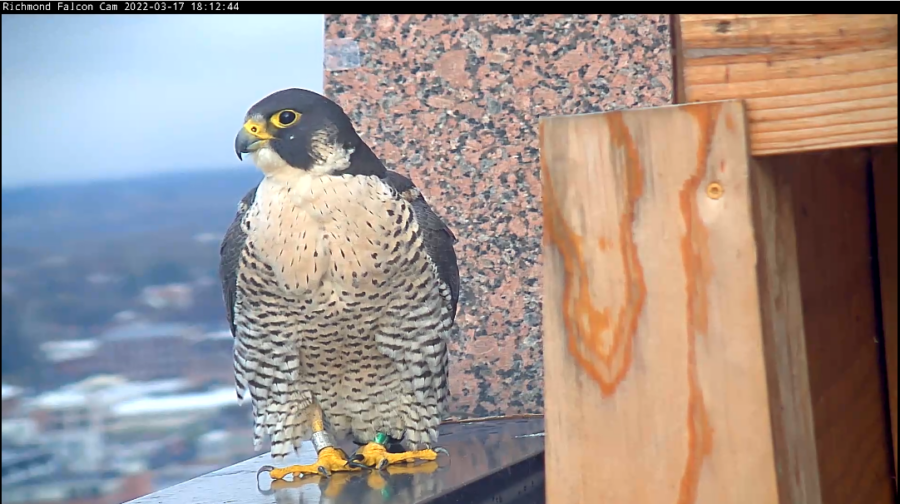
The female falcon perches in one of her favorite spots next to the nest box.
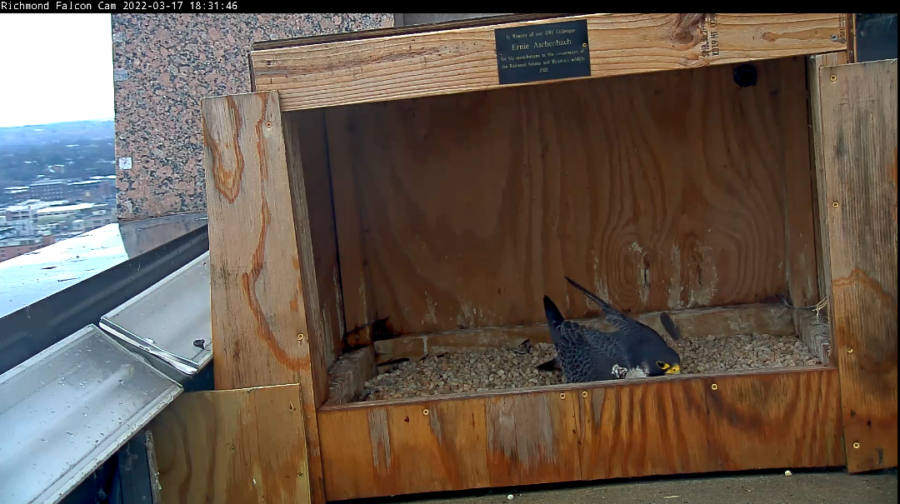
The male falcon maintains the shallow depression where the female will lay her eggs (otherwise known as the scrape) by laying down and using his legs to dig out the gravel from underneath him.
Although we have yet to see any eggs in the falcon nest box atop the Riverfront tower, signs are favorable that the Richmond pair will produce a clutch this year.
DWR biologists spent yesterday afternoon downtown monitoring the birds along with the University of Richmond’s Urban Ecology and Evolution class. The group met at Kanawha Plaza and watched as the falcons perched near the nest box, periodically vocalizing to one another for an extended amount of time. At one point, we observed the male fly toward the James River to hunt. He returned roughly thirty minutes later with a yellow-bellied sapsucker, which he delivered to the female after securing a few bites for himself. The female proceeded to feast on the sapsucker atop the parapet ledge while feathers rained down on to the street. The male’s presenting of prey to the female is part of the courtship phase of the peregrine’s breeding cycle, and is known as courtship feeding.
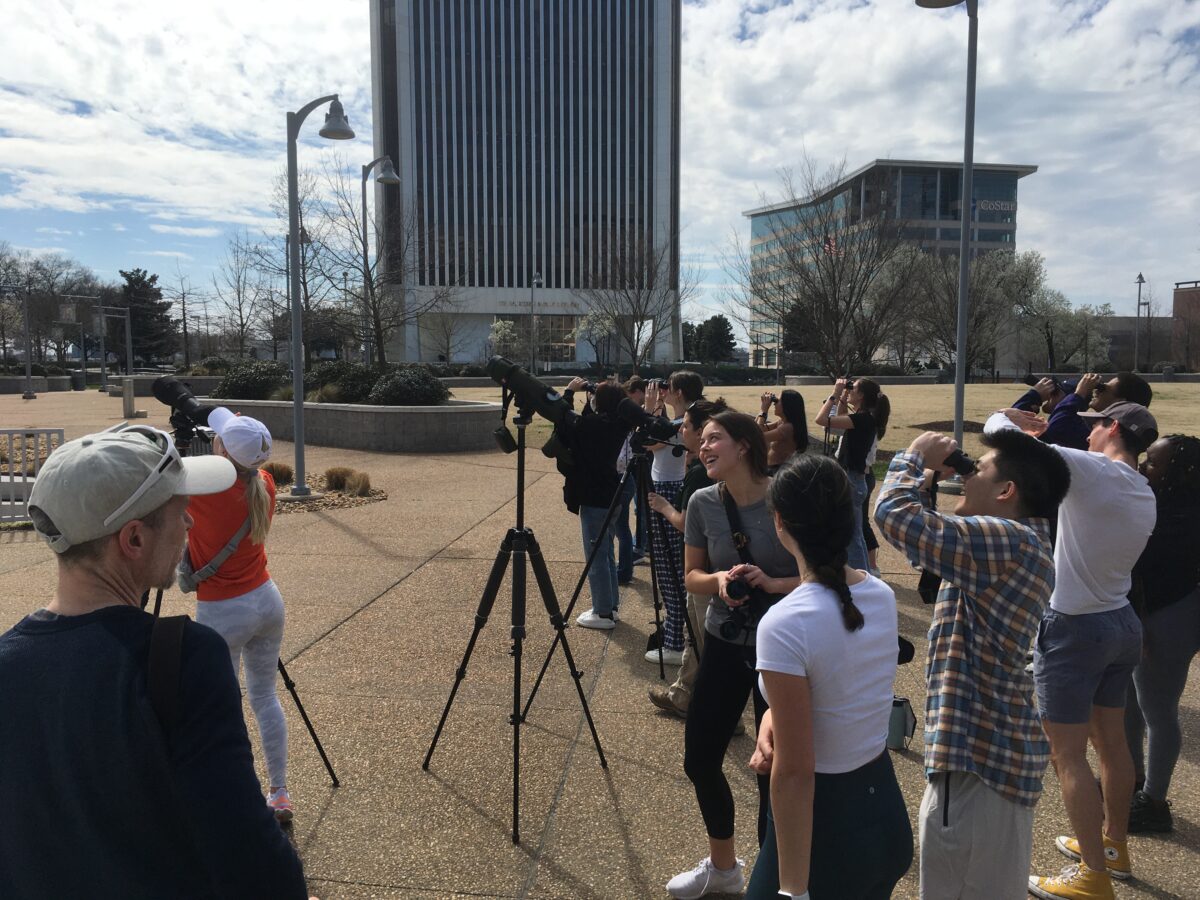
University of Richmond’s Urban Ecology and Evolution class joins DWR biologists to monitor the falcons from Kanawha Plaza.
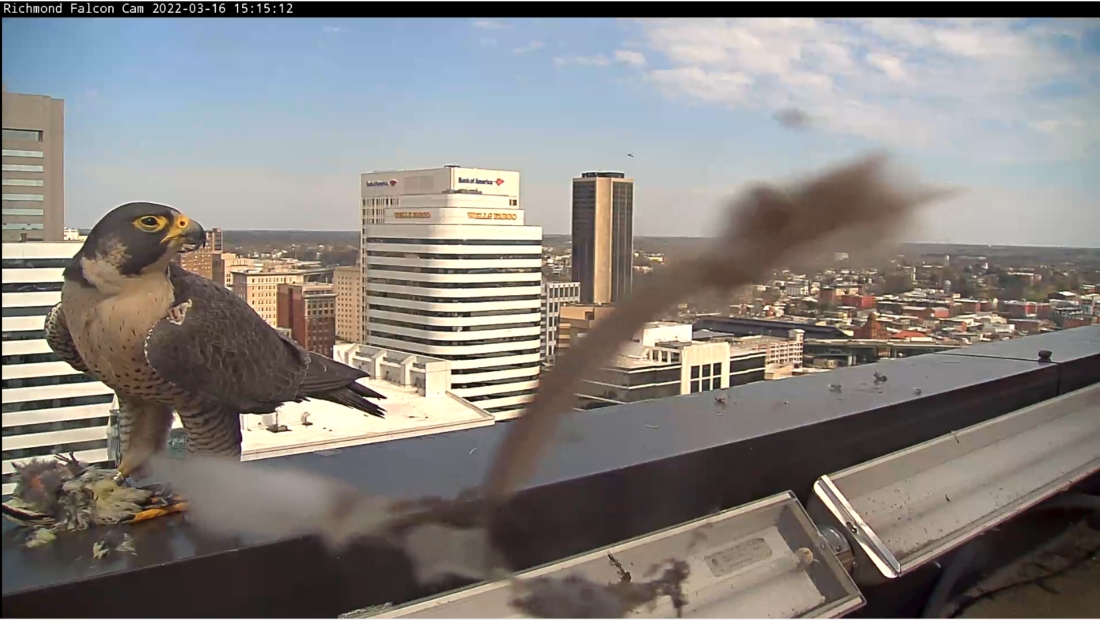
Female falcon feeds on a prey item (yellow-bellied sapsucker) which was offered to her from the male.
However, one of the more promising signs that we may have eggs in the near future came when we witnessed the pair copulating atop the building. Bouts of copulation may begin as early as three weeks before egg laying takes place, and continues during at least a portion of the egg laying period.
We’ve also noticed the female spending longer periods of time on camera and occasionally even roosting near the box throughout the evenings.

The female falcon roosting near the nest box on the night of March 16th and into the morning of March 17th.
The female has nested twice in the past, laying her first egg on April 2nd in 2020 and on March 28 last year, but only time will tell if she follows the same schedule this year. The falcons’ behavior indicates that we will likely see another clutch soon, so be sure to keep your eyes peeled for egg laying in the upcoming weeks!
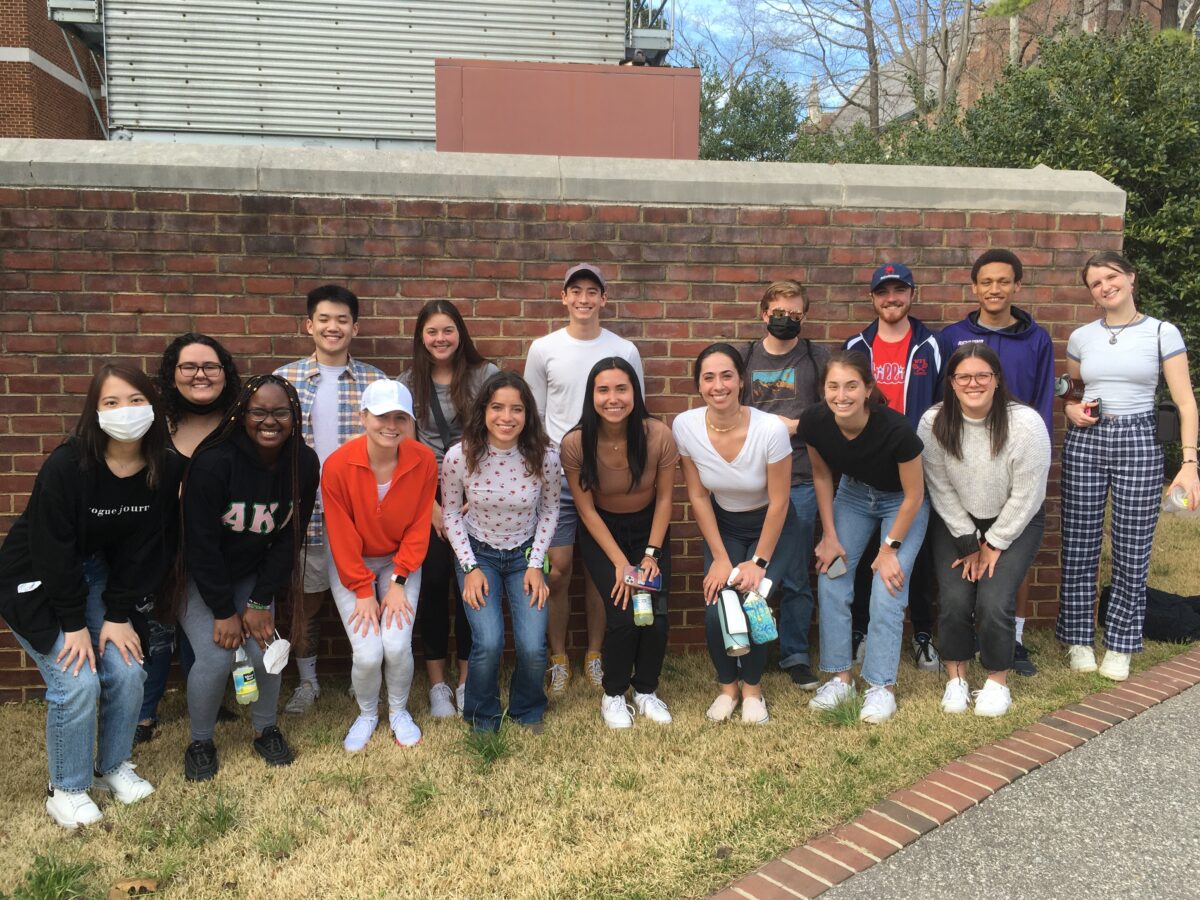
Thanks again to the next generation of wildlife biologists from the University of Richmond that joined us in the field!

